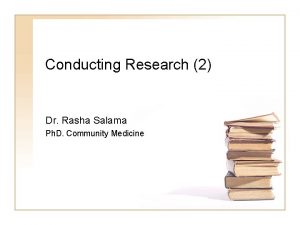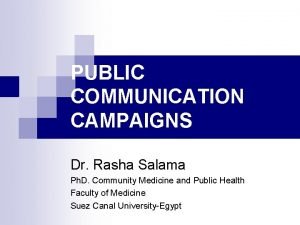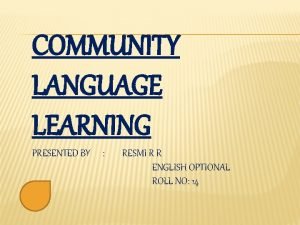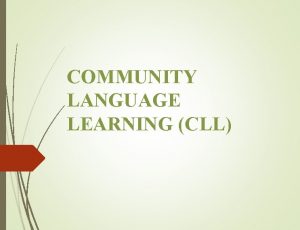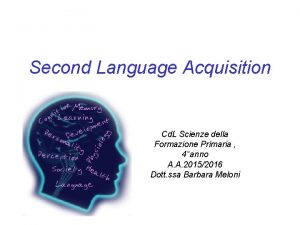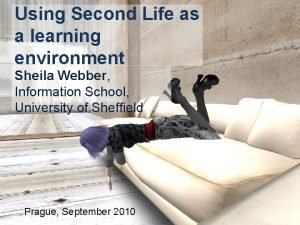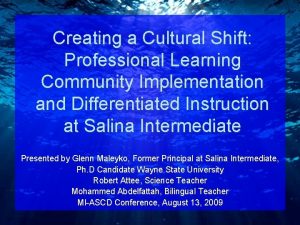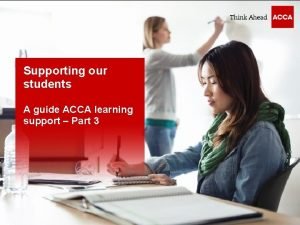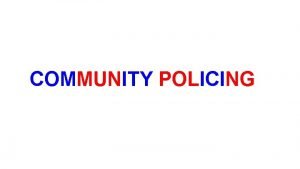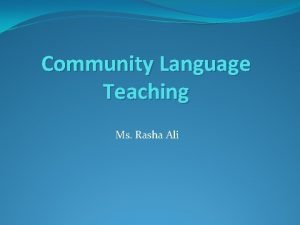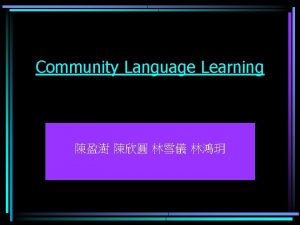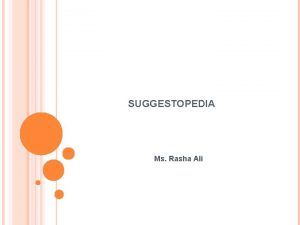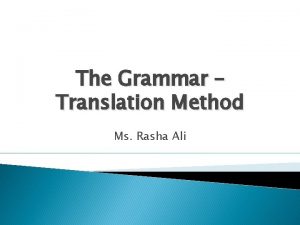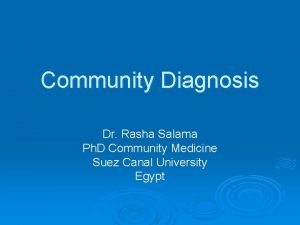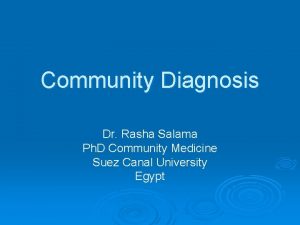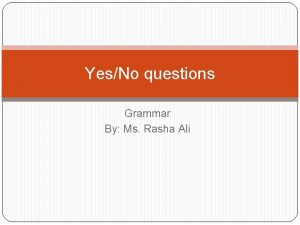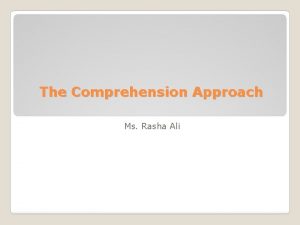COMMUNITY LANGUAGE LEARNING Ms Rasha Ali Introduction In















- Slides: 15

COMMUNITY LANGUAGE LEARNING Ms. Rasha Ali

Introduction In this method teacher needs to consider students as whole person: to have some understanding of students’ feelings, relationship to each other, physical reactions, desire to learn. CLL takes its principles from Counseling-Learning approach developed by Curran. He found that adults often feel threatened by a new learning situation and to appear foolish. This method can solve this issue when a teacher become a language counselor: Someone who is skillful understander of the struggle students face as they attempt to internalize another language.

How to apply CLL in TEFL class recorded conversation 1. Introduce yourself to the class then ask them to do so 2. Explain the lesson objectives to your students 3. Explain the 1 st activity & sets a time limit 4. Ss will have a recorded conversation (any topic) using their L 1 5. Teacher will watch Ss and give them a translation in chunks 6. Ask them about their feelings after they finish 7. Students will listen to the tape (their conversation)

8. Students will translate the conversation to TL 9. You will write the transcript (chunks) on the board 10. Point to some phrases (transcript) and ask your Ss to give the Arabic (Ss L 1) equivalents. If nobody knows then you can write it 11. Read the transcript several times (Ss will listen) 12. Ss will choose some phrases to repeat and learn how to pronounce correctly 13. Ss work together in groups

14. Correct their errors 15. Ask the to read their sentences to their friends in the class 16. Play the tape many times so they listen 17. Ask them to speak about their experience again 18. Continue the activity then start a new conversation

Method’s principles 1. teacher’s goal in using CLL To learn how to use the TL communicatively, to learn about their learning & take responsibility, to learn how to learn from each other. 2. Teacher’s role/Students’ role Teacher is a counselor. Learners become more independent in different stages.

3. CLL teaching characteristics Conversation using Ss L 1 - give a translation in chunks – these chunks are recorded – a transcript is made of the conversation – L 1 equivalents are written beneath TL – the transcript becomes a text – Ss are invited to express their feelings during this learning experience.

According to Curran there are 6 elements for non-defensive learning: A- security B- aggression (give Ss a chance to assert themselves) C- attention D- reflection (Ss reflected on the Las T read the transcript) E- retention F- discrimination (sorting out the differences among TL forms)

4. S-T interaction, S-S interaction S-T interaction: sometimes Ss are assertive, T facilitates their ability to express themselves. Other times T is in charge & providing directions. All times T structures the class & Ss take responsibility. According to Tranel CLL is T-S centered relationship. S-S interaction: they can learn from each other. They should have a spirit of cooperation not a competition.

5. Students’ feeling Ss feeling is considered very important in CLL. They can comment on how they feel, T will respond to them and listen. T can help Ss overcome negative feelings. 6. Language and culture viewed L is for communication. The focus is on sharing & belonging between persons. The focus shifts more to TL (group’s individual). L becomes the means of developing creative & critical thinking. Culture is an integral part of L learning.

7. Language/skills are emphasized At the beginning Ss generate the material, later on T prepare specific materials or work with textbooks. Some grammar points, pronunciation patterns & vocabulary. The most important skills are understanding & speaking the language at the beginning.

8. Student’s L 1 role Students’ security is initially enhanced by using their L 1. The purpose is to provide a bridge from the familiar to the unfamiliar. Directions in class, sessions during students express their feelings are conducted in their L 1. In later stages more and more of TL can be used for sure.

9. Students’ evaluation There’s no particular mode of evaluation in CLL. Students would be asked to write a paragraph or be given an oral interview. Teachers can encourage their students to selfevaluate. 10. Teacher’s feedback Teacher can repeat correctly what the student has said incorrectly without calling further attention to the error.

CLL Techniques 1. Tape recording student’s conversation 2. Transcription 3. Reflection on experience 4. Reflective listening 5. Small group tasks

Do activity A 1, 2 page 105 Thank you
 Rasha salama
Rasha salama Rasha salama
Rasha salama Rasha salama
Rasha salama Rasha salama
Rasha salama Public communication campaigns
Public communication campaigns Community language learning nedir
Community language learning nedir Language
Language Cuadro comparativo e-learning b-learning m-learning
Cuadro comparativo e-learning b-learning m-learning Acquisition vs learning
Acquisition vs learning What is the language in
What is the language in Prepare to scale up in social mobilization
Prepare to scale up in social mobilization Sheila's community learning curve
Sheila's community learning curve Cultural shifts in a professional learning community
Cultural shifts in a professional learning community Cultural shifts in a professional learning community
Cultural shifts in a professional learning community Learning community acca
Learning community acca Introduction of community policing
Introduction of community policing
